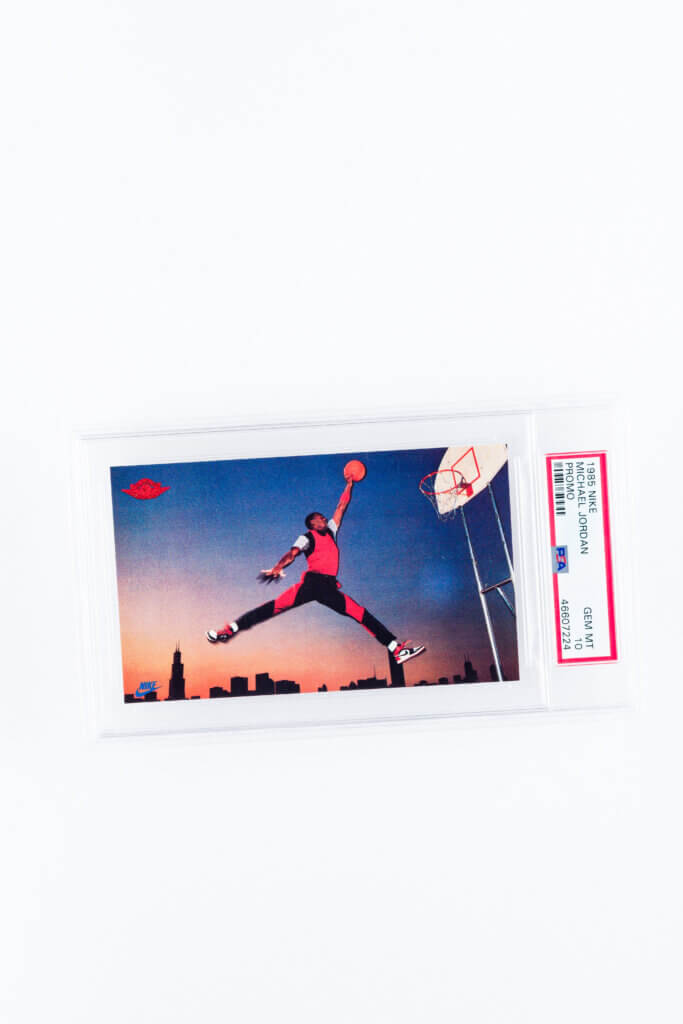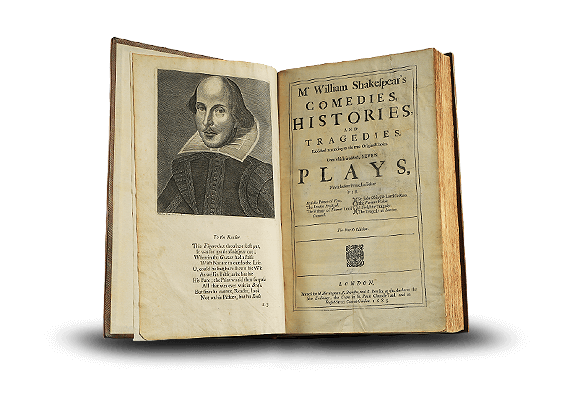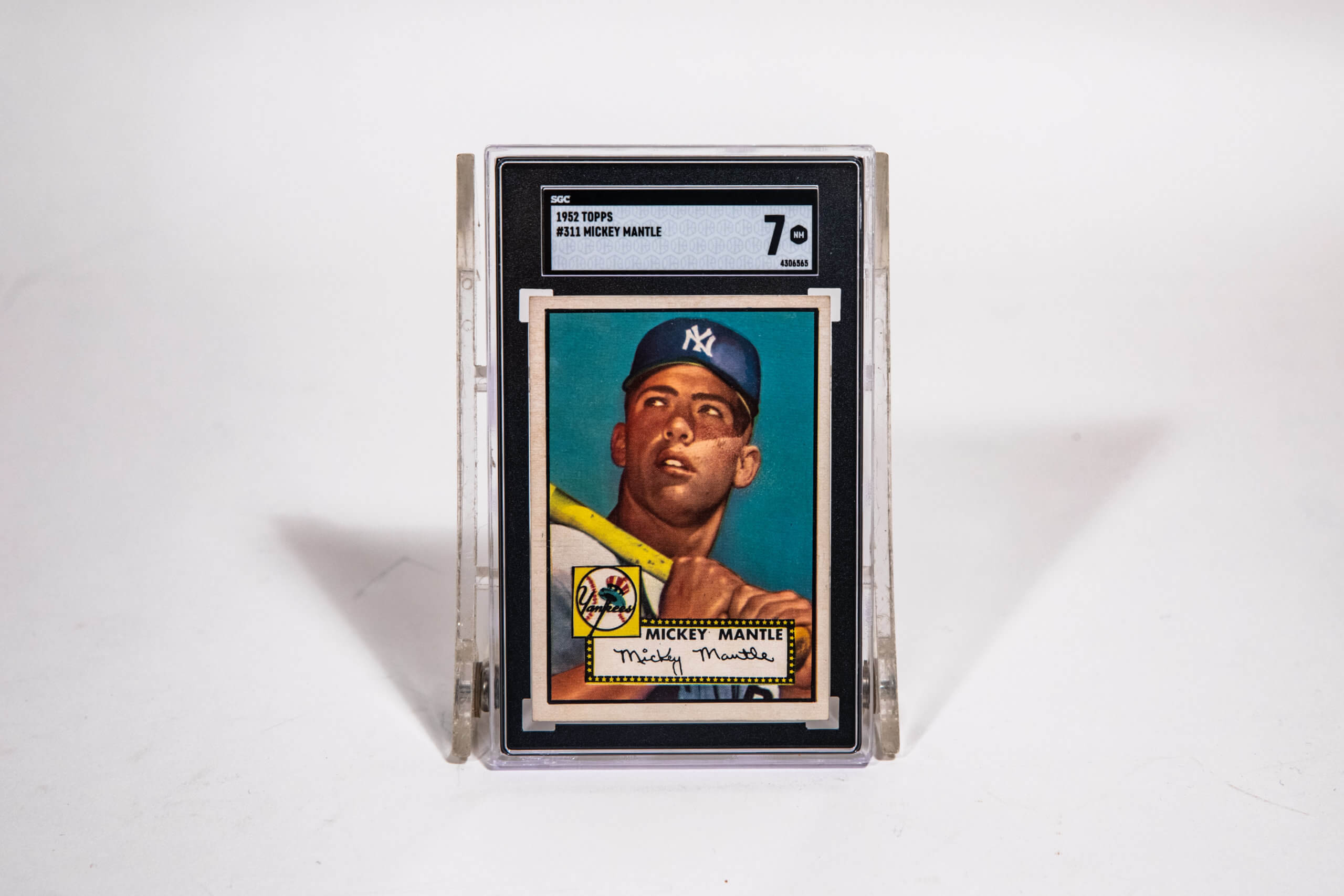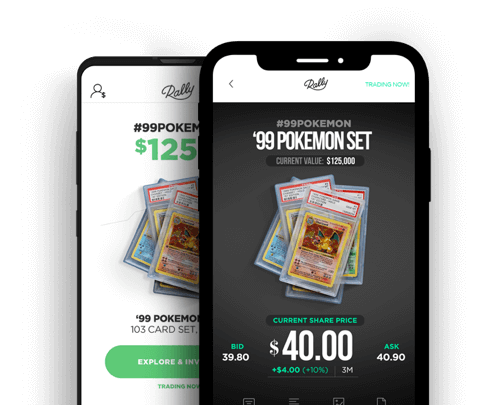Blog > Stories
If the Shoe Fits: When Michael Jordan and Nike Joined Forces to Launch an Empire
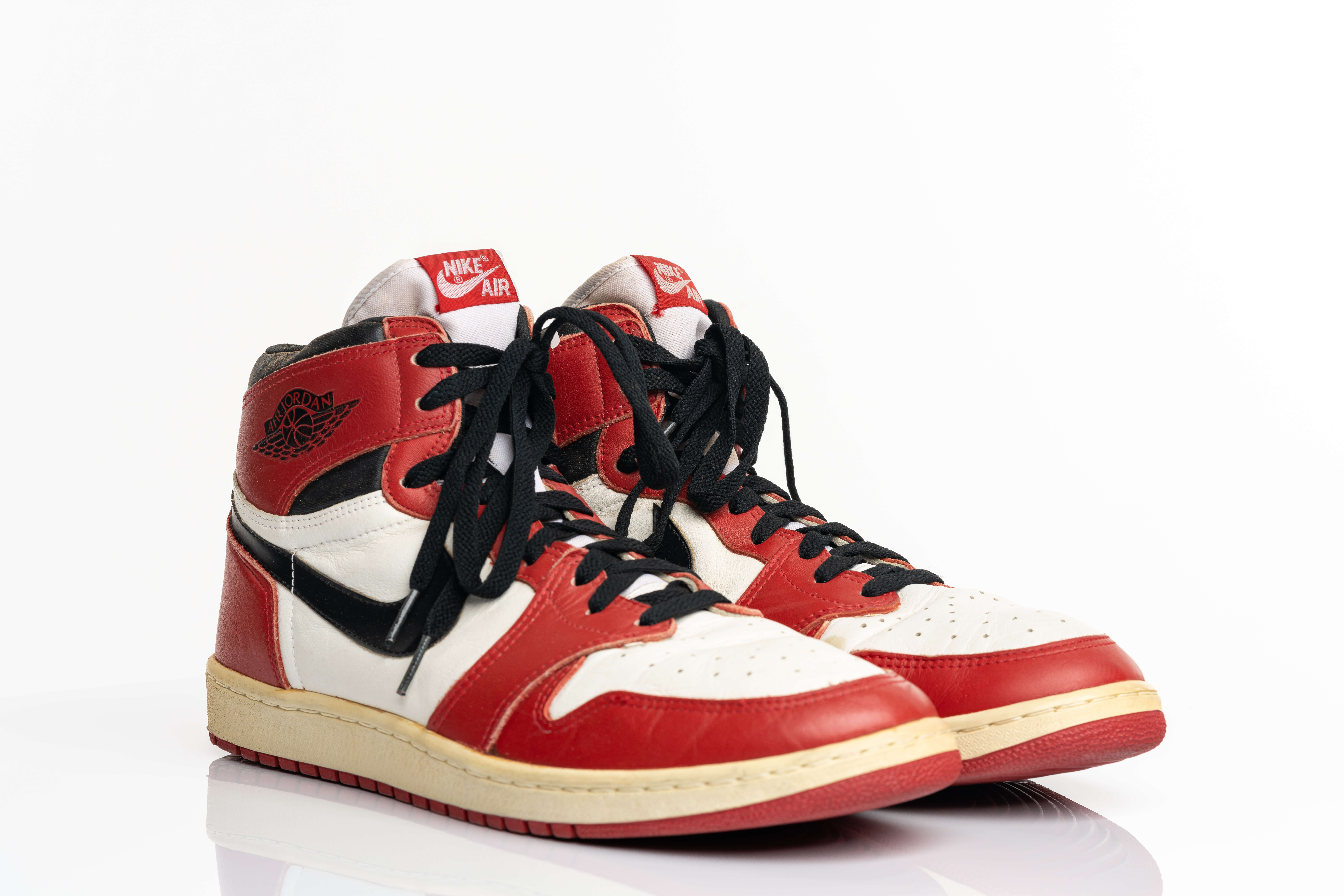
Blog > Stories
If the Shoe Fits: When Michael Jordan and Nike Joined Forces to Launch an Empire

Today, Michael Jordan is as well known for his performance on the basketball court as he is for the sneakers he wore during the game. His Air Jordan collaboration with Nike wasn’t the first sneaker deal, but it broke the mold and set the stage for a new type of player-centric brand. Though it’s hard to imagine considering how synonymous MJ is with Nike, there was a time when he wanted nothing to do with them. It wasn’t until the brand dazzled him with their vision for a sneaker line completely tailored to MJ as an athlete, an icon, and a marketing machine that he began to change tune.
“You’re going to go listen. You may not like it, but you’re gonna go listen.”
Those words, spoken from Deloris Jordan to her 21-year-old son Michael, would change the course of history. Not just for sneakers or basketball, but for culture writ large.
When Nike came knocking before Jordan’s rookie season in 1984, MJ was not impressed. But the budding superstar had also been left disappointed by his first choice, Adidas, who failed to offer him a contract, and Converse, who offered MJ a $100K deal, but came off unremarkable. “Don’t you guys have any new, innovative ideas?” asked Michael’s father, James, to a group of Converse executives.
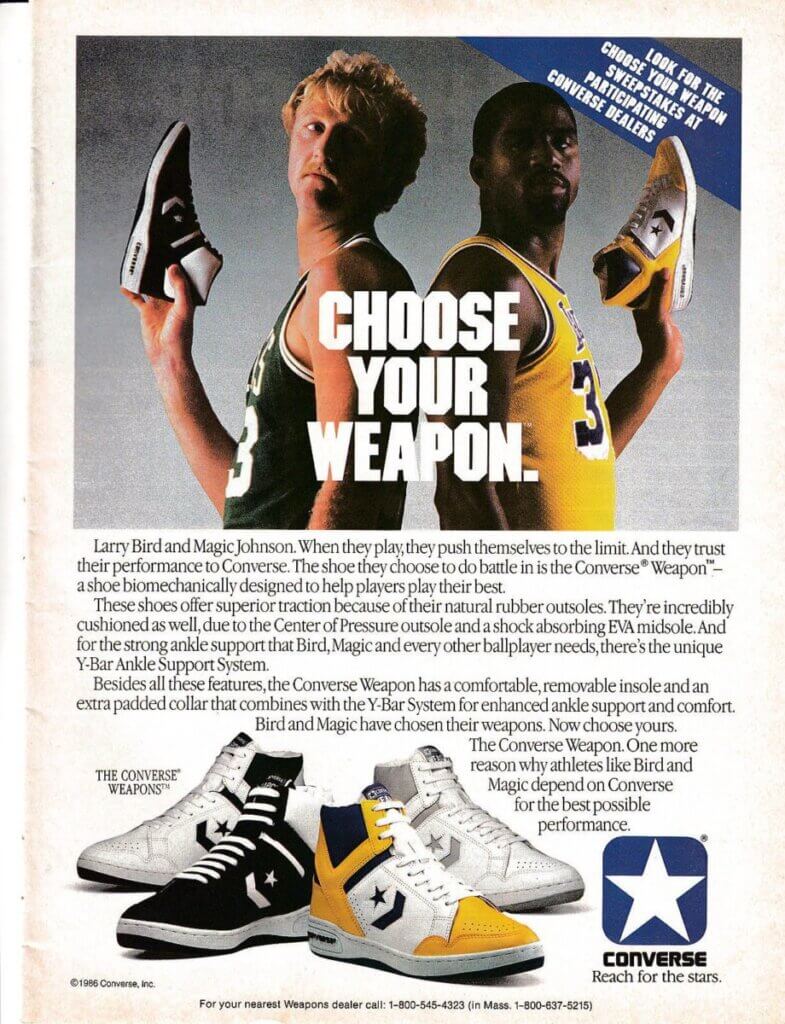
His blunt question was met with complete silence.
In fairness to Jordan, at the time the Swoosh wasn’t the sexy brand we know today. They had made great strides in previous years, releasing the wildly successful Air Force 1s in 1982 and establishing themselves as a serious contender in the sportswear industry. But, despite the growing success, Nike had hit a speed bump in 1984. Earlier that year, the company reported their first quarterly loss in its history and they were in dire need of a boost.
Despite that, Jordan’s agent, David Falk, was hell-bent on getting MJ to Nike. He had steered other clients like Moses Malone and Bernard King toward the brand and had established a strong relationship with the company.
MJ was far from keen on the idea. But, to make his mom happy, he took the meeting that would spawn a $10B+ brand.
“Jordan was shown a highlight tape of himself to the Pointer Sisters “Jump,” a song that had recently debuted. Moore showed him a red-and-black shoe design. Jordan said that one of the reasons he liked Adidas was because they were lower to the ground than the higher shoes that Nike was making.
Moore said he could tailor them to Jordan’s liking.”
ESPN
Jordan was intrigued. Then, Nike founder Phil Knight entered the room. Knowing MJ’s affinity for cars, Knight gestured toward two die-cast Mercedes cars — floating the promise of an added vehicular bonus upon signing.
Nike offered Jordan a five-year, $2.5M record-shattering contract. Jordan’s father had no doubts: “You have to be a fool not to take this deal. It’s a great deal.”
Jordan was sold, saying: “I don’t want to go to another meeting.”
The Shoes for the Player, Not the Other Way Around
Once he came to an agreement with Nike, work began on his new brand of signature shoes. Falk suggested the name “Air Jordan” — a reference to MJ’s leaping ability as well as the air technology employed in Nike sneakers.
The sneakers hit retail shelves in April 1985 for $65, months before Jordan’s debut.
“The Air Jordan I, the sneaker that changed the world. Premium leather stitched to a cup sole that sat on top of a Nike Air bag.
The shoe was made for basketball. But it’s an art piece now, a symbol that represents so much. Youth. History. Style. Innovation. Community. Winning.”
SLAM
Nike designer Peter Moore led the efforts to sculpt the AJ1s. One of the most substantial innovations dreamed up by Moore was to have home and away sneakers.
“I was designing the shoe with the idea that I needed a real basketball shoe that the best basketball player in the world could play in. But I also needed something that would be unique, never seen before.”
The entire launch and marketing campaign centered around Jordan as an individual and pushed his persona to the forefront — a massive leap from traditional sponsorships which mold the player into a representative of the brand.
“Nobody had taken a player, created shoes and apparel that tied to his style, then launched it all [at] once,” Moore said.
To further cater the sneaker to Jordan’s tastes, particularly his love of Adidas, Moore added a premium leather upper to mimic the ‘worn-in’ feeling that MJ favored in Adidas sneakers.
When Going All-In Worked
The Air Jordan brand set out to build a full stack marketing package, a sum of its component parts like sneakers, color ways, brand, and first and foremost: Athlete.
A year after Apple ran its legendary “1984” ad during the Super Bowl, Nike mounted a historic marketing campaign of its own. Kicking off the most successful endorsement deal in the history of sports, Nike’s Air Jordan 1 commercials harped on a narrative from his rookie year.
The first commercial dramatically pans down from Jordan’s face to his sneakers. While the sound of a bouncing basketball echoes in the background, a voiceover relays:
“On September 15, Nike created a revolutionary new basketball shoe. October 18, the NBA threw them out of the league.”
In effect, Nike was building a brand around their superstar that separated him from the NBA as an individual, and subtly asking fans to pick a side. The issue with Nike’s “rebellion” advertising is that it was revisionist history.
Early Air Jordan 1 commercials painted a picture of the NBA cracking down on MJ for wearing black and red Air Jordan 1s. A fine was said to be issued, with Nike picking up the tab on Jordan’s behalf — portraying the sneakers as an act of defiance against the establishment.
Moore says, “Prior to that, 99 percent of shoes were white or black, so I decided to design a shoe that would really take color well. And the colors were red, black and white. I didn’t pick those colors. That’s the colors of the Chicago franchise. We did a bunch of color-ups, like a coloring book. I showed him a whole bunch of those pages. At first he was very leery of red, black and white. He did not like those, as has been quoted. He called them ‘the Devil’s colors.’ He wanted to wear Carolina blue. I told him, you’re gonna have to talk to the guy that owns the Bulls.”
A Little Omission of Facts
But there was a problem with that story about the October 18 game. While the game did take place (it was a preseason matchup against the Knicks) and Jordan did play, he was definitely not wearing the Air Jordan 1s.
MJ was wearing something called the Nike Air Ships.
It wouldn’t be crazy to mistake the Air Ships with an earlier Nike release, the Air Force 1’s. Both were designed by Bruce Kilgore and are dotted with commonalities ranging from a high-top design all the way down to the raised lettering on its sole.
Kilgore’s AF-1s were released in 1982, blazing a technological path that would shape sneaker design to this very day. It was Kilgore’s first attempt at a basketball sneaker, and it took the full might of Nike’s DCEC committee — which consisted of a wide array of scientists including an aerospace engineer named Frank Rudy.
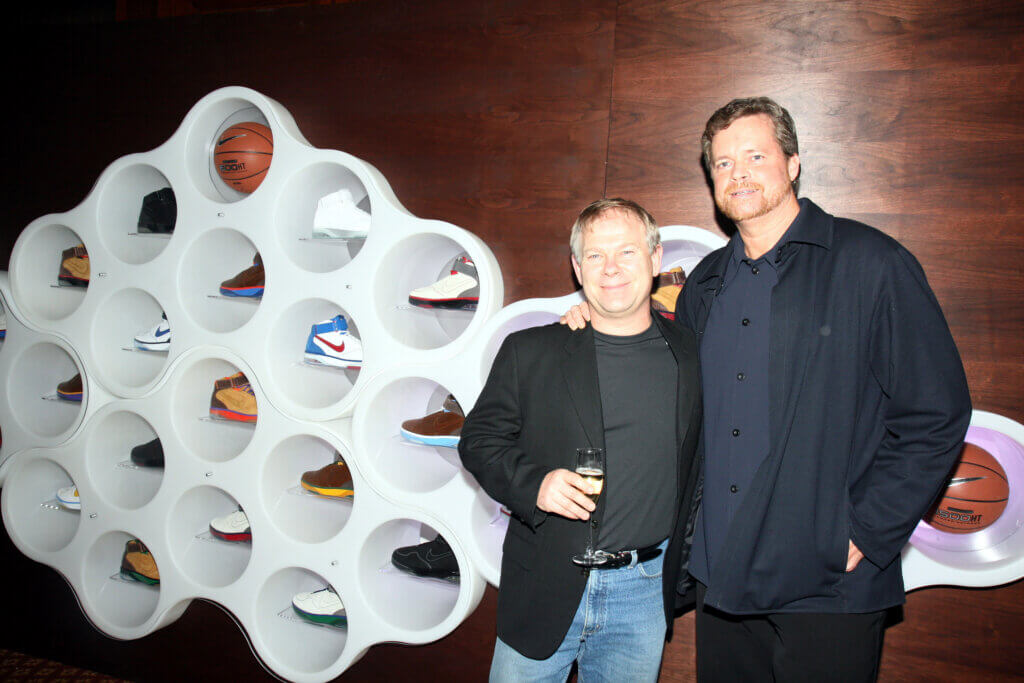
Rudy had previously been responsible for pitching Nike on the idea of a pocket of air to cushion their sneaker designs. First introduced with the Nike Air Tailwind in 1979, that same system would be implemented in Kilgore’s AF-1s, making them the first basketball shoe with Nike’s “Air Technology.”
The same innovations were carried over into Kilgore’s next design, the Nike Air Ships. What was in retrospect a stop-gap between the AF-1’s and Air Jordan 1’s, the Air Ships could have been reduced to a mere piece of trivia for sneaker heads. But as it so happened, the Air Ships would go down in history as the sneakers worn by Michael Jordan in his first-ever NBA games.
Pesky Timing Truths
Though for years, Nike kept them a secret.
Because details like that ruin great storytelling, Nike tried to erase the Air Ships from memory. Despite Jordan only wearing the Air Jordan 1s in an NBA game for the first time in late November of his rookie year, they became known as his first NBA shoe.
The myth carried Nike to the March retail launch of the Air Jordan 1s, marking the first in a line of sneakers that rivaled Jordan’s on-court greatness in popularity and has dominated in terms of longevity.
Nike stuck to their story for decades — never releasing a retro or mentioning the Air Ships at all.
They rewrote history.
Finally, the Jordan Brand Twitter account posted a photo of MJ wearing Air Ships on the 30th anniversary of his NBA debut.
Then, in 2020, Nike brought the Air Ships out of the box for a long-awaited return ahead of “The Last Dance” docuseries.
Not long after, the earliest known regular season pair of Jordan’s game-worn sneakers came up for auction at Sotheby’s. The red and white Air Ships were signed by Jordan and matched to his fifth NBA game in 1984. After decades in the dark, the Air Ships became the first pair of sneakers to ever sell at auction for over $1M. They shattered the record, with bidding ending at nearly $1.5M.
Meanwhile, the Air Jordan 1s launched a multibillion-dollar industry through the Jordan X Nike collaboration — one that remains thriving today decades after that first meeting.
Highlighted Rally Assets
Rally’s 1985 Michael Jordan Rookie Game-Worn Air Jordan 1’s
Rally’s 1985 Nike Michael Jordan Rookie Promo Card
Rally’s 1990’s Bulls Championship Rings Complete Set (6)
Rally’s 1992 Signed Michael Jordan Game-Worn Air Jordan 7’s
Rally’s 1984 Jordan Signing Day Jersey
Rally’s 1996 Michael Jordan Playoff-Worn Air Jordan 11’s “Bred”
Rally’s 1985 Jordan “Shattered Backboard” Jersey (Signed)
Sources
Armstrong, Megan. n.d. “Michael Jordan Preferred Adidas over Nike, Converse out of College.” Bleacher Report. Accessed March 30, 2023. https://bleacherreport.com/articles/2890004-michael-jordan-preferred-adidas-over-nike-converse-out-of-college.
“How Nike Landed Michael Jordan.” 2013. ESPN.com. February 15, 2013. https://www.espn.com.au/blog/playbook/dollars/post/_/id/2918/how-nike-landed-michael-jordan.
Benson, Pat. 2022. “Michael Jordan Signed with Nike 38 Years Ago Today.” Sports Illustrated FanNation Kicks News, Analysis and More. October 26, 2022. https://www.si.com/fannation/sneakers/news/michael-jordan-nike-celebrate-38-years-together.
Armstrong, Megan. n.d. “Michael Jordan Preferred Adidas over Nike, Converse out of College.” Bleacher Report. Accessed March 30, 2023. https://bleacherreport.com/articles/2890004-michael-jordan-preferred-adidas-over-nike-converse-out-of-college.
Bieler, Des. n.d. “A Young Michael Jordan Wanted Adidas for His Shoe Deal. Adidas Passed.” Washington Post. https://www.washingtonpost.com/news/early-lead/wp/2015/03/24/a-young-michael-jordan-wanted-adidas-for-his-shoe-deal-adidas-passed/.
“Introducing the Icon: How the Air Jordan I Came to Life.” 2018. SLAM. November 14, 2018. https://www.slamonline.com/kicks/introducing-icon-air-jordan-came-life/.
Sandomir, Richard. 2022. “Peter Moore, a Force in the 1980s Sneaker Revolution, Dies at 78.” The New York Times, May 6, 2022, sec. Business. https://www.nytimes.com/2022/05/06/business/peter-moore-dead.html#:~:text=%E2%80%9CPrior%20to%20that%2C%2099%20percent.
“Setting Straight the Story of the Nike Air Ship.” n.d. Sneaker Freaker. https://www.sneakerfreaker.com/features/setting-straight-the-story-of-the-nike-air-ship.
Steve Beaven, The Oregonian. 2009. “Frank Rudy, the Inventor of the Nike Air Sole Technology, Has Died.” Oregonlive. December 25, 2009. https://www.oregonlive.com/news/2009/12/frank_rudy_the_inventor_of_the.html.
“Michael Jordan’s Game-Worn Nike Air Ship Sold for $1.47 Million USD at Sotheby’s Auction.” 2021. Hypebeast. October 25, 2021. https://hypebeast.com/2021/10/michael-jordan-game-worn-nike-air-ship-record-1-47-million-usd-sothebys-sale.


